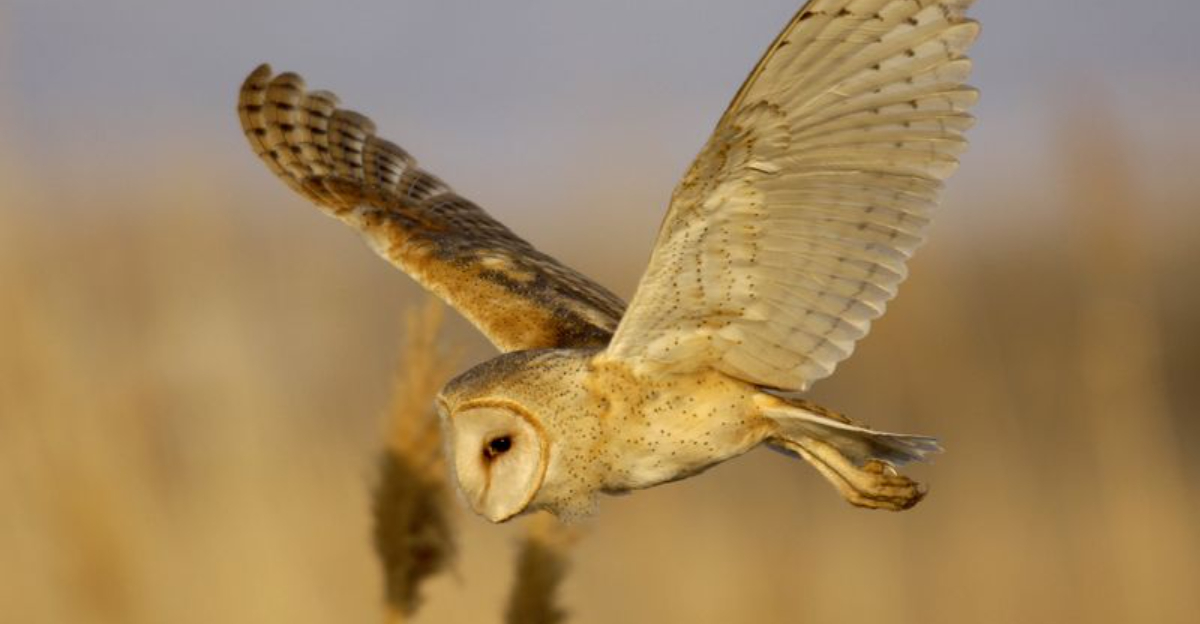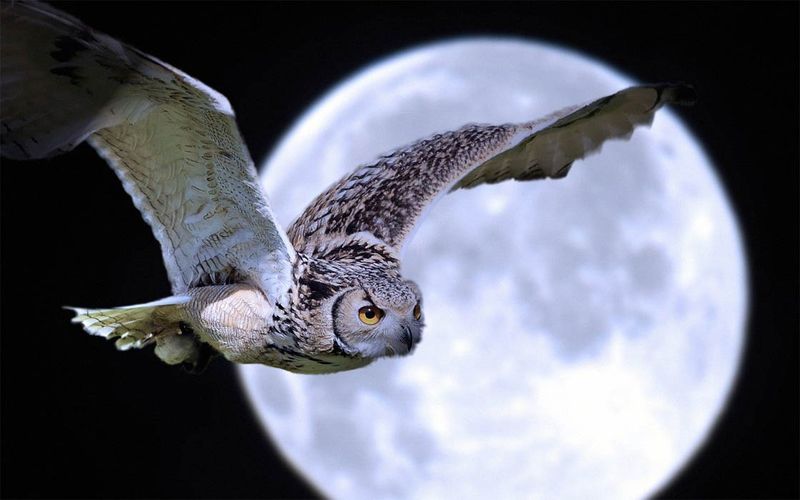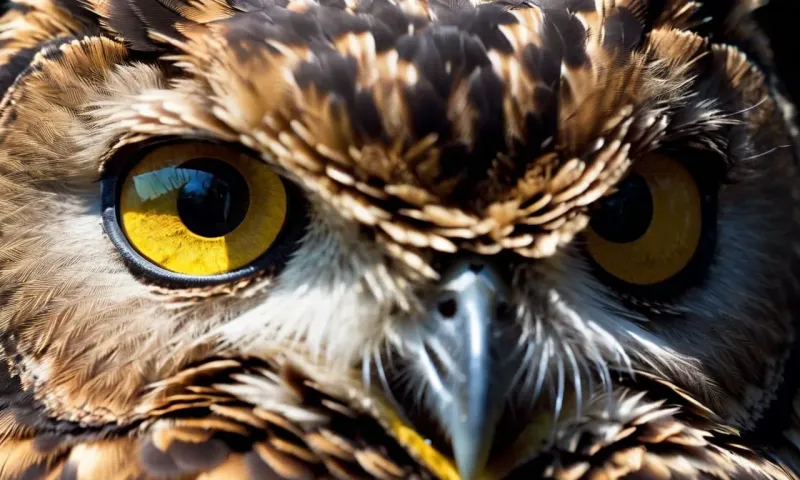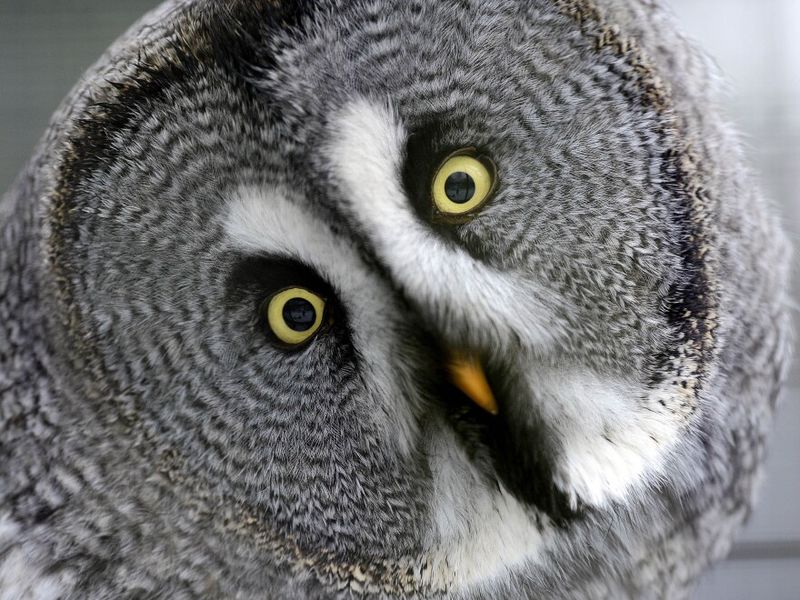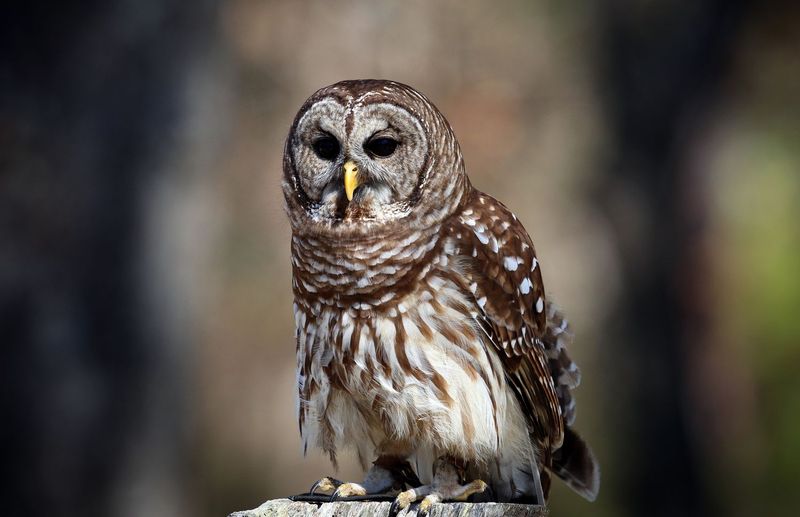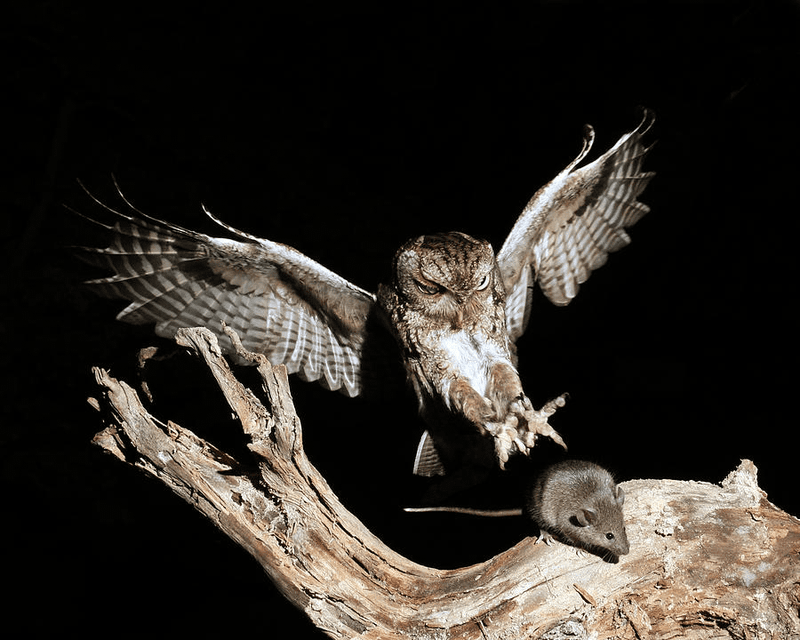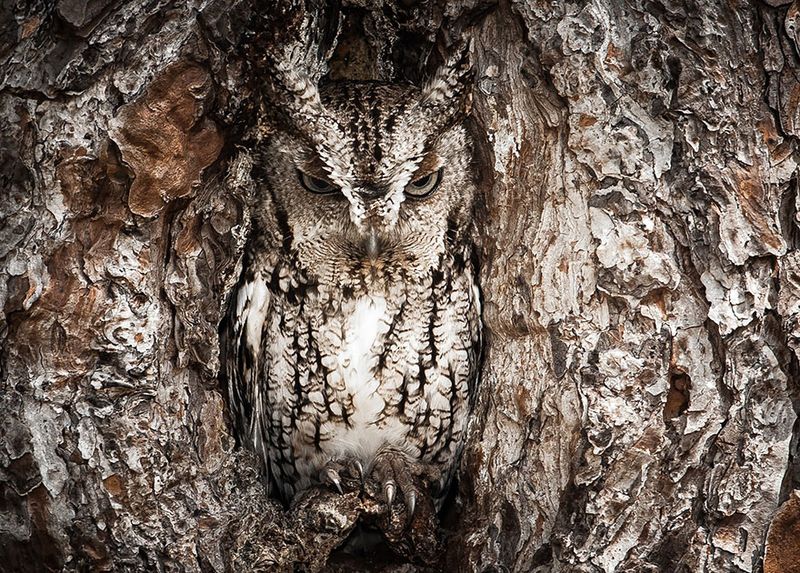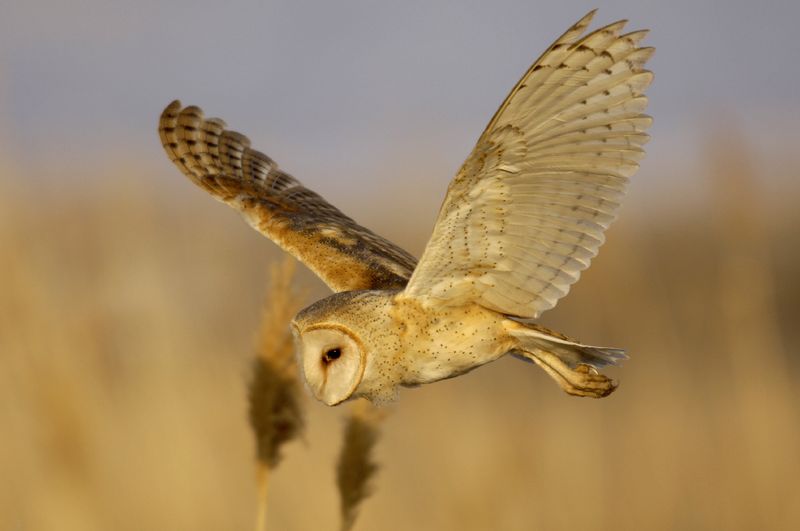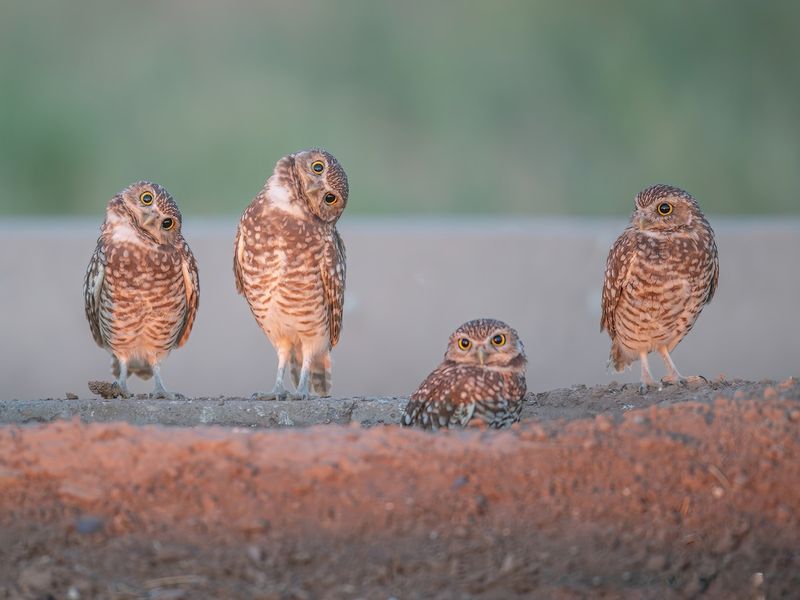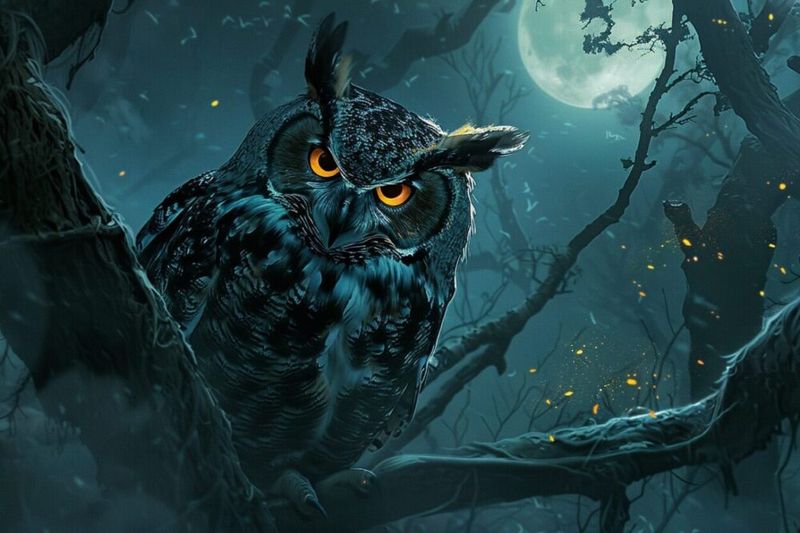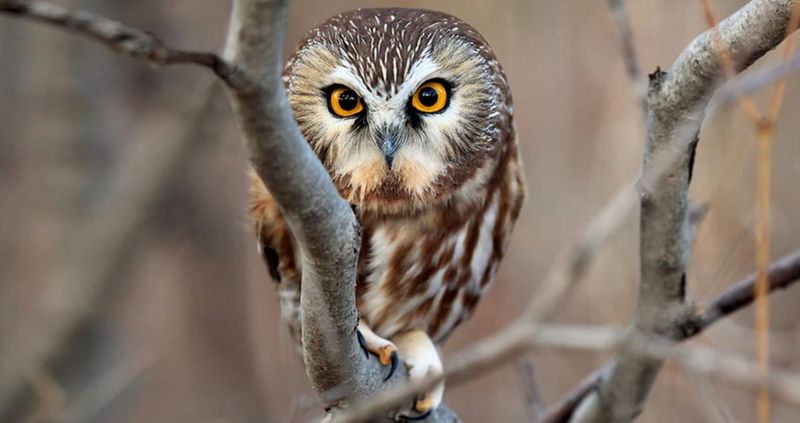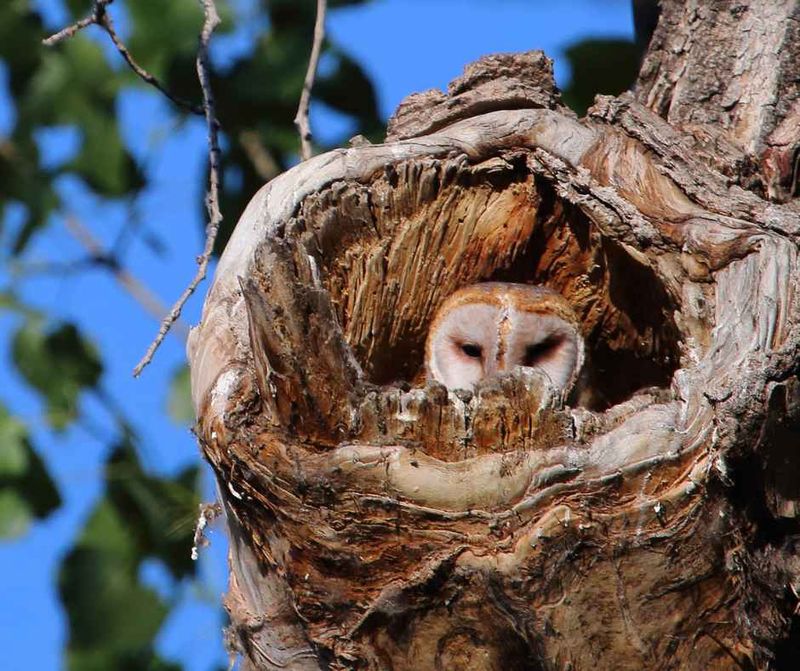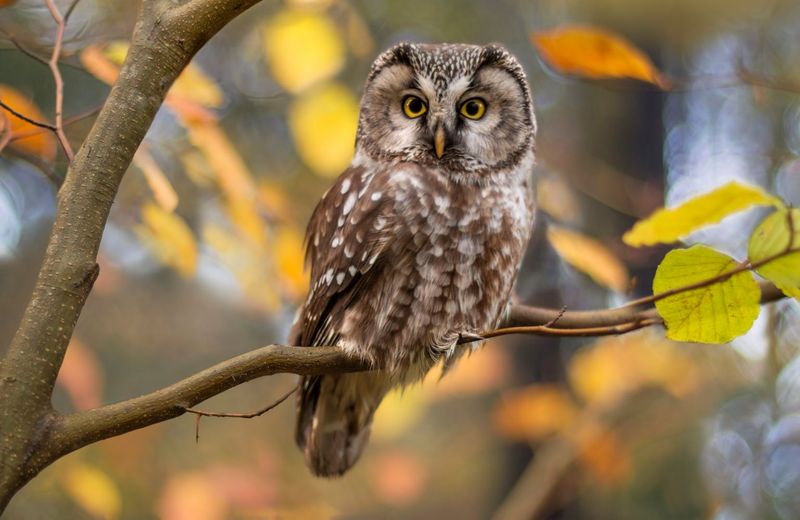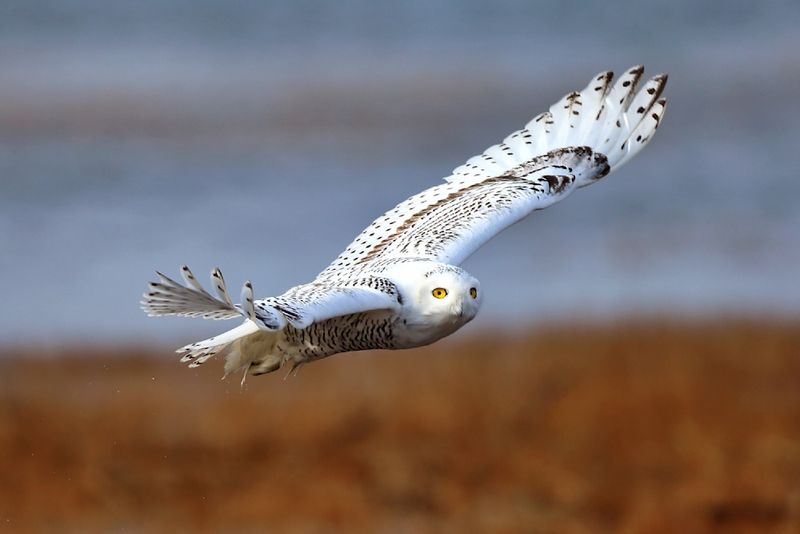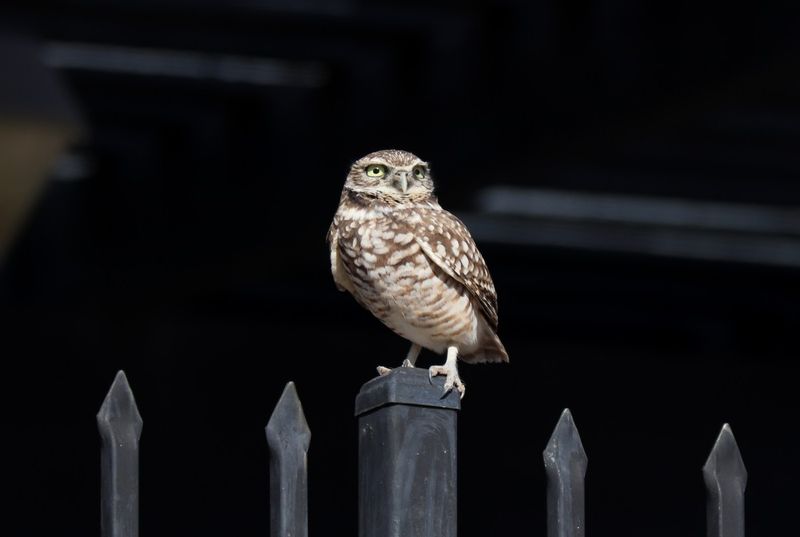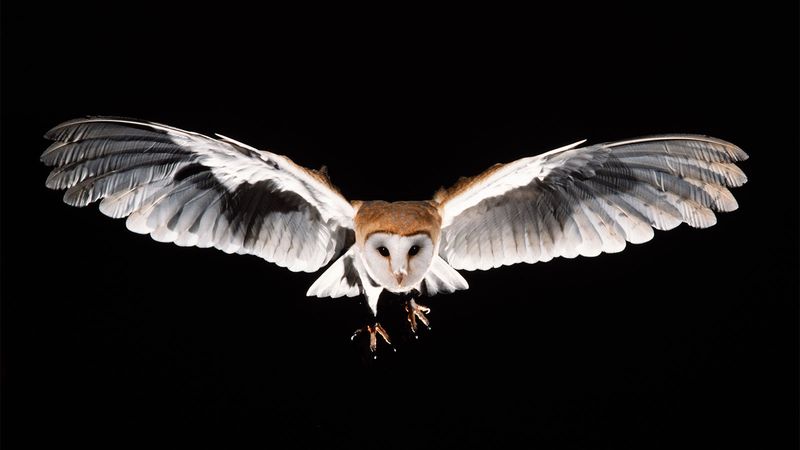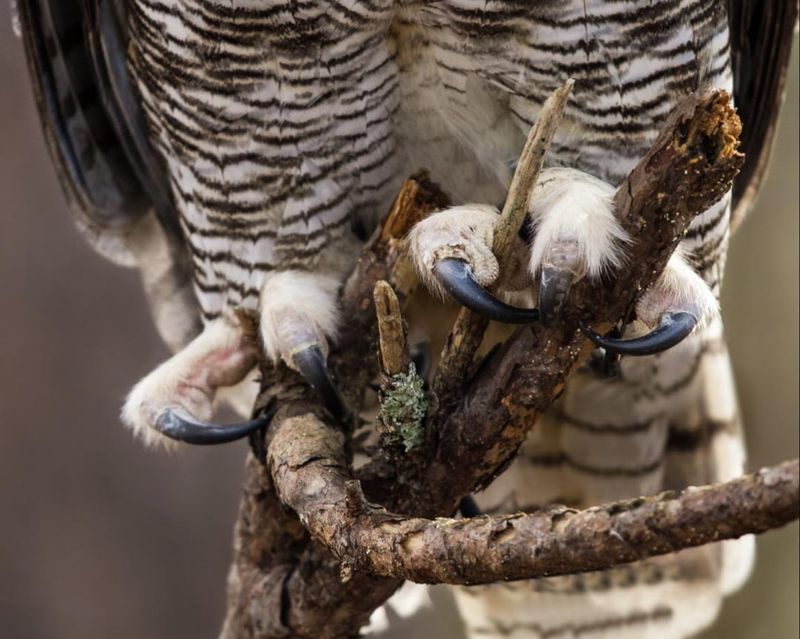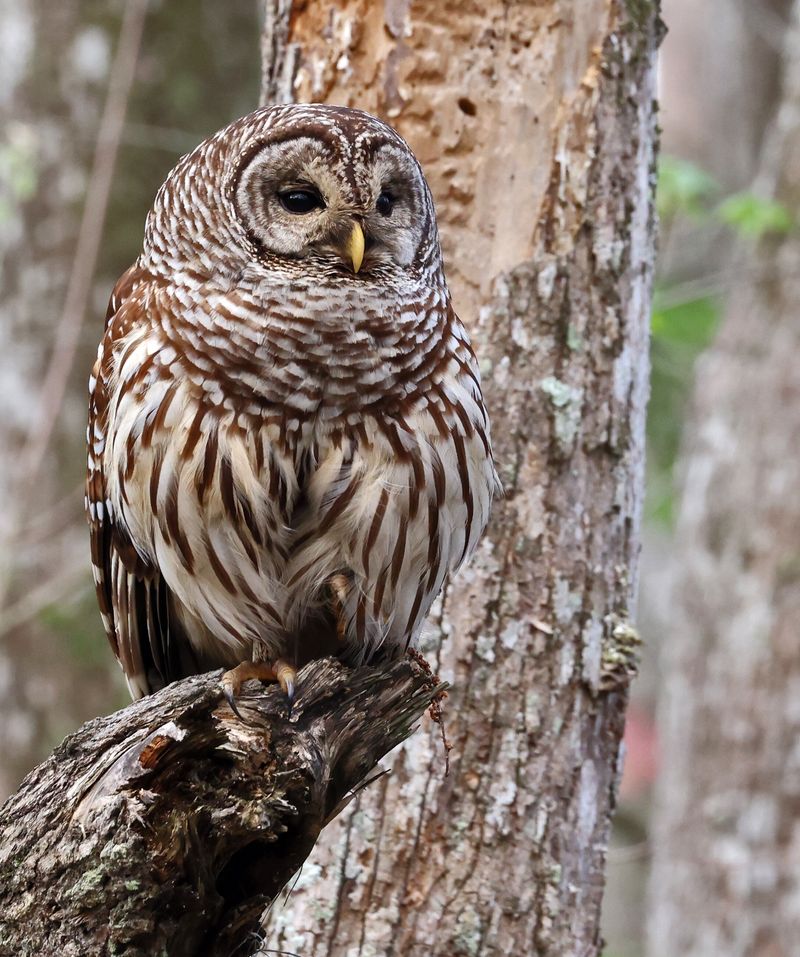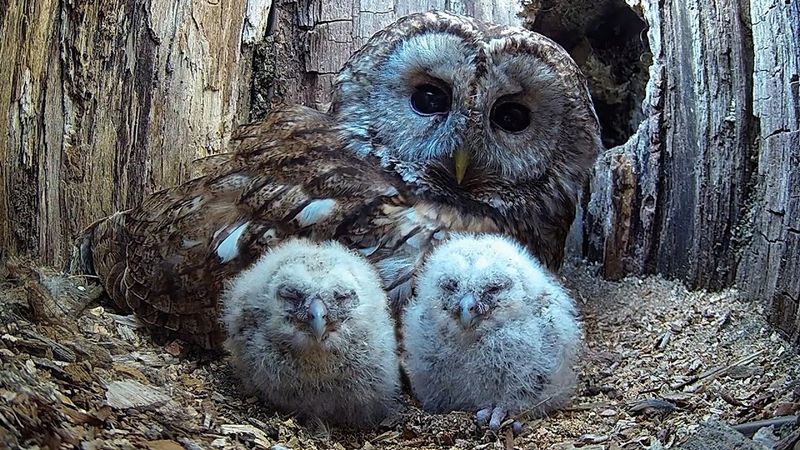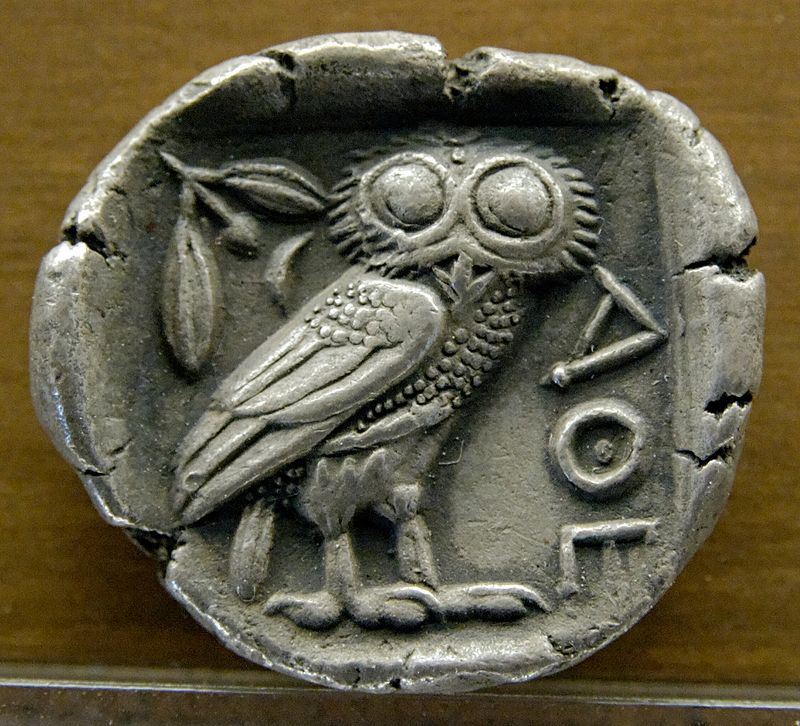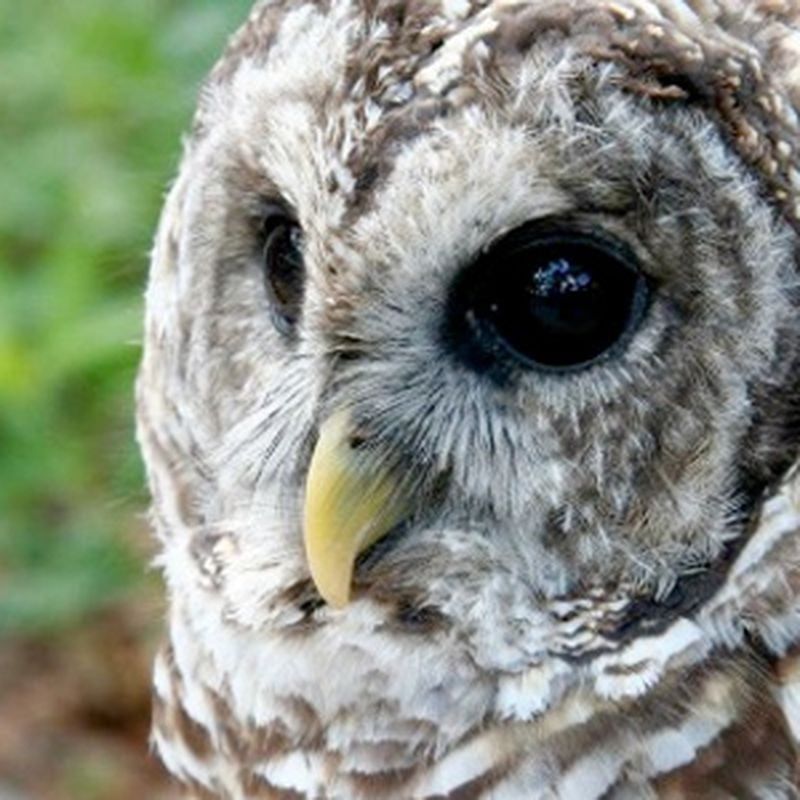Owls have always captured human imagination with their enigmatic presence and nocturnal activities.
These mysterious birds are more than just silent hunters of the night; they possess a fascinating range of characteristics and abilities that set them apart from other avian species.
From astonishingly keen eyesight to the ability to rotate their heads nearly full circle, owls are equipped with unique adaptations that help them thrive in their environments.
In this blog post, we’ll explore 20 incredible facts about owls that will change how you perceive these captivating creatures.
1. Owls’ Silent Flight
Owls are renowned for their silent flight, an ability that sets them apart from other birds. This is due to their unique wing structure, which reduces turbulence and noise.
The leading edges of their wings have serrations that break up the air, while the velvety feathers absorb sound. This allows owls to swoop down on prey unnoticed, making them formidable hunters.
Their silent approach is an evolutionary adaptation that enhances their hunting efficiency, enabling them to catch unsuspecting prey even in the dead of night. This stealth mode is crucial for their survival in the wild.
2. Owls’ Night Vision
Owls are equipped with exceptional night vision, allowing them to hunt effectively in low-light conditions. Their large eyes, fixed in their sockets, provide a wide field of view and gather more light.
Rod cells, more abundant in owls than cones, are sensitive to light, enhancing their ability to see in the dark.
This adaptation is vital for locating prey in the dim light of dawn or dusk. Although they cannot shift their eyes like humans, their ability to rotate their heads compensates for this limitation, ensuring they never miss a potential meal.
3. 360-Degree Head Rotation
Owls possess the incredible ability to rotate their heads up to 270 degrees in either direction. This adaptation is essential due to their immovable eyes, allowing them to have a broad field of vision without moving their bodies.
Specialized vertebral arteries and a blood-pooling system ensure uninterrupted blood flow to the brain during these extreme rotations. This remarkable feature aids in spotting prey and navigating their environment.
The ability to swivel their heads so extensively adds to their mystique and is a testament to their evolutionary ingenuity.
4. Owls’ Unique Calls
Owls are known for their distinctive calls, which vary widely among species. These vocalizations are used for communication, territory establishment, and attracting mates.
Each species has its signature sound, ranging from the classic hoot of a great horned owl to the eerie screech of a barn owl. These calls serve as an important tool in the social structure of owl communities, helping them maintain territories and establish bonds.
Listening to owl calls can be a haunting yet mesmerizing experience, providing a glimpse into their secretive lives.
5. Owls’ Varied Diet
Owls are opportunistic hunters with a diet that varies depending on the species. While many favor small mammals like rodents, some also consume insects, birds, and even fish.
Their sharp talons and beaks are perfectly adapted for grasping and tearing prey. This dietary flexibility allows owls to thrive in diverse habitats, from dense forests to open grasslands.
Understanding an owl’s diet can provide insights into its role in the ecosystem, highlighting their importance as natural pest controllers, keeping small animal populations in check.
6. Owls’ Camouflage Skills
Owls are masters of disguise, equipped with plumage that allows them to blend seamlessly with their surroundings. This camouflage is essential for both hunting and protection.
By mimicking the colors and patterns of their environment, owls can avoid detection by both prey and predators. This stealthy adaptation is particularly beneficial during the day when they need to rest undisturbed.
The ability to remain unseen is a testament to their evolutionary success and adds an element of mystery to their already enigmatic nature.
7. Owls’ Acute Hearing
Owls have extraordinary hearing, which plays a crucial role in their hunting prowess. Their facial disks act as sound collectors, directing sound waves to their asymmetrically placed ears.
This feature allows them to pinpoint the exact location of prey, even under snow or dense foliage. Some owls, like the barn owl, can hunt entirely by sound, a testament to their auditory precision.
This acute sense of hearing complements their night vision, making owls efficient nocturnal hunters and highlighting their adaptability in various environments.
8. Owls’ Fascinating Courtship
The courtship rituals of owls are as intriguing as their hunting techniques. These rituals often involve vocal duets, synchronized flying, and food offerings. Males may present potential mates with prey as a demonstration of their hunting skills.
These behaviors not only strengthen pair bonds but also ensure the survival of their offspring.
Observing owl courtship provides insight into their social structures and breeding strategies, revealing a softer side to these mysterious birds. Such displays are a testament to the complexity of their interactions in the wild.
9. Owls in Culture and Mythology
Throughout history, owls have been symbols in various cultures, embodying wisdom, mystery, and omens. In Greek mythology, the owl was associated with Athena, the goddess of wisdom.
Native American tribes often viewed owls as protectors or messengers. However, in some cultures, owls were seen as harbingers of death.
These diverse beliefs highlight the cultural significance of owls, reflecting human fascination with their elusive and enigmatic nature. Exploring these myths provides a window into how humans perceive and relate to these remarkable birds.
10. Owls’ Lifespan and Longevity
Owls can live quite long lives, especially in protected environments such as sanctuaries or zoos. In the wild, their lifespan varies by species, with smaller owls living around 5-10 years and larger species reaching up to 25 years.
Factors influencing their longevity include environment, food availability, and human interference. Understanding an owl’s lifespan offers perspective on their life cycle and conservation needs.
Protecting their habitats ensures that future generations can continue to marvel at these fascinating creatures in their natural settings.
11. Owls’ Nesting Habits
Owls exhibit diverse nesting habits, often depending on the species and habitat. Some prefer tree hollows or old nests of other birds, while others may nest on the ground or use cliff ledges.
The choice of nesting site is crucial for protecting their eggs and young from predators. During the breeding season, the female typically incubates the eggs while the male hunts.
Understanding their nesting behaviors provides insight into their reproductive strategies and the importance of habitat conservation for their survival.
12. Owls’ Role in Ecosystems
Owls play a vital role in maintaining the balance of ecosystems. As predators, they help control populations of small mammals, insects, and other prey species, preventing overpopulation and crop damage.
Their presence indicates a healthy environment, as they require abundant prey and suitable habitats to thrive. Conserving owl populations is essential for preserving biodiversity and ecological harmony.
By understanding their ecological roles, we can appreciate the interconnectedness of life and the critical part owls play in sustaining natural ecosystems.
13. Owls’ Migratory Patterns
Some owl species are migratory, traveling vast distances in search of food and better living conditions. The snowy owl, for instance, migrates from the Arctic to more temperate regions during the winter.
These migrations are driven by prey availability and environmental conditions. Observing their migratory behavior offers insights into the challenges owls face due to changing climates and habitats.
Protecting migratory routes and understanding these patterns are crucial for owl conservation, ensuring these majestic birds continue to grace our skies.
14. Owls’ Adaptation to Urban Environments
Owls have shown remarkable adaptability to urban environments, finding niches in parks, gardens, and even city buildings. They are drawn to these areas due to the abundance of prey, such as rodents, and suitable nesting sites.
Urban owls often serve as natural pest controllers, reducing the need for chemical interventions. However, they face challenges like habitat destruction and pollution.
Their presence in urban areas highlights the resilience and adaptability of owls, emphasizing the need for harmonious coexistence between wildlife and human development.
15. Owls’ Feather Adaptations
The feathers of owls are uniquely adapted to aid in silent flight, a crucial aspect of their hunting strategy. The leading edges of their primary feathers have comb-like structures, while the trailing edges are fringed.
This design minimizes sound and maximizes stealth. The soft texture of their feathers further absorbs noise, allowing owls to approach prey undetected.
This adaptation not only enhances their hunting success but also contributes to their mysterious aura. The intricate design of an owl’s feathers underscores the evolutionary marvels of these birds.
16. Owls’ Talon Strength
Owls possess incredibly powerful talons, essential for capturing and holding onto prey. These sharp, curved claws are designed to pierce and grip, providing a secure hold even on struggling prey.
The strength of their talons varies among species, with larger owls having more formidable grips. This physical adaptation is crucial for their survival, enabling them to tackle prey larger than themselves.
Understanding the mechanics of their talons offers insight into their hunting tactics and the role they play in the food chain.
17. Owls’ Scientific Studies
Owls have been the subject of numerous scientific studies, providing valuable insights into their behavior, physiology, and ecology. Researchers have explored their hunting strategies, sensory adaptations, and role in various ecosystems.
These studies contribute to conservation efforts, helping protect owl populations and their habitats. By understanding owl biology and ecology, scientists can develop strategies to mitigate human impact and ensure the survival of these fascinating creatures.
The ongoing research underscores the importance of owls in the natural world and their contribution to scientific knowledge.
18. Owls’ Parenting Skills
Owls are devoted parents, with both males and females playing roles in raising their young. The female typically incubates the eggs while the male provides food. Once hatched, the chicks depend on their parents for warmth and nourishment.
The parents’ cooperative effort ensures the survival and growth of their offspring. Observing owl parenting offers insight into their social structures and family dynamics.
These nurturing behaviors emphasize the importance of protecting owl habitats, ensuring future generations can continue to experience the wonder of these engaging birds.
19. Owls’ Historical Depictions in Art
Owls have long been depicted in art, symbolizing wisdom, knowledge, and mystery. From ancient Greek pottery to modern paintings, their presence in art reflects human fascination with their enigmatic nature.
Artists often portray owls in scholarly settings, emphasizing their association with insight and learning. These historical depictions provide a cultural context to our understanding of owls, showcasing their influence on human creativity and thought.
Exploring these artistic representations reveals the timeless allure of owls and their symbolic significance across cultures.
20. Owls’ Unique Anatomy
Owls possess a unique anatomy that equips them for their nocturnal lifestyle. Their large eyes are adapted for night vision, while their facial disks enhance their hearing.
Their skeletal structure supports a flexible neck for head rotation and strong talons for hunting. This anatomy allows them to thrive as nocturnal predators, showcasing the evolutionary adaptations that make them successful hunters.
Understanding their anatomy provides insight into their behaviors and ecological roles, highlighting the intricacies of their design and their place within the natural world.
